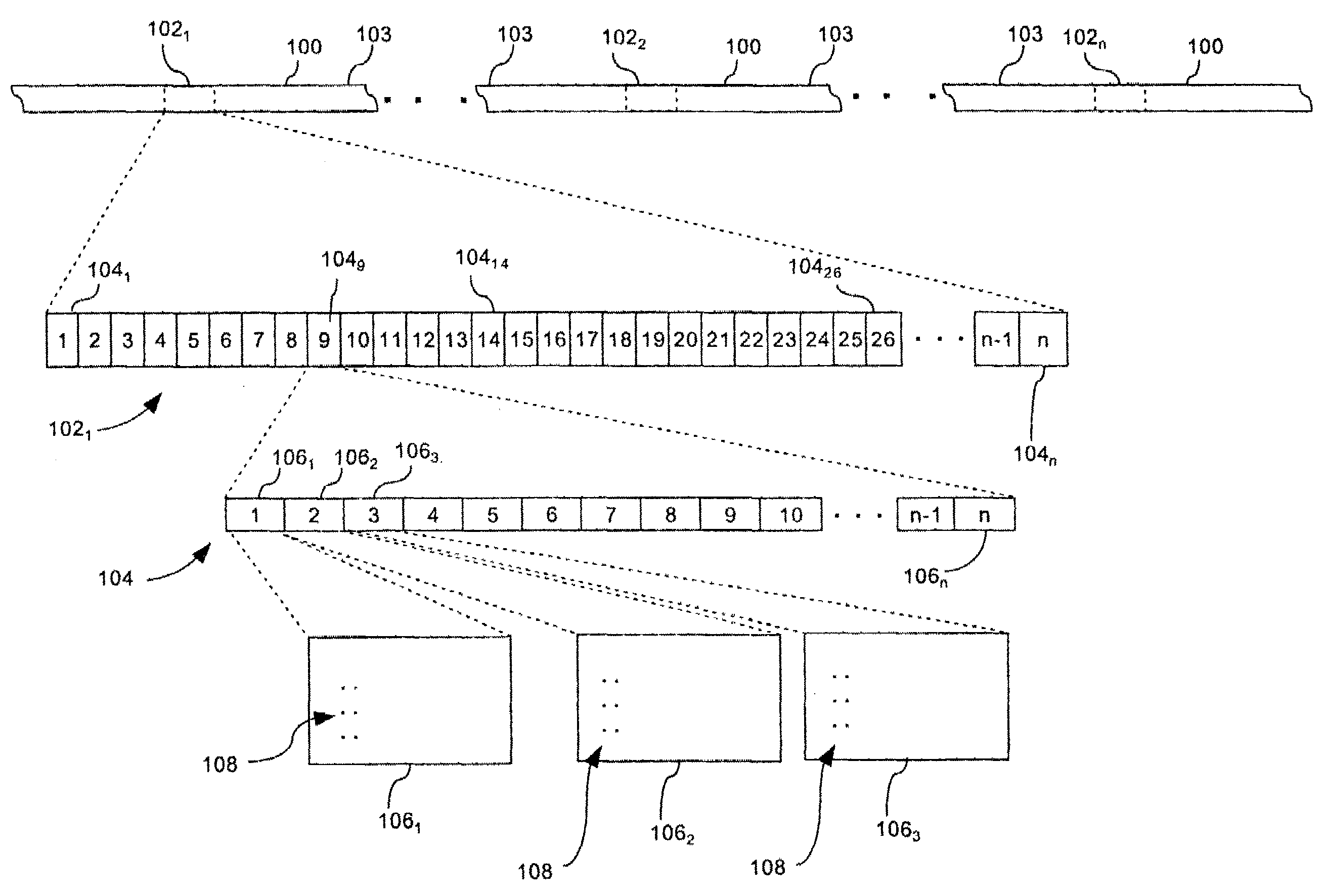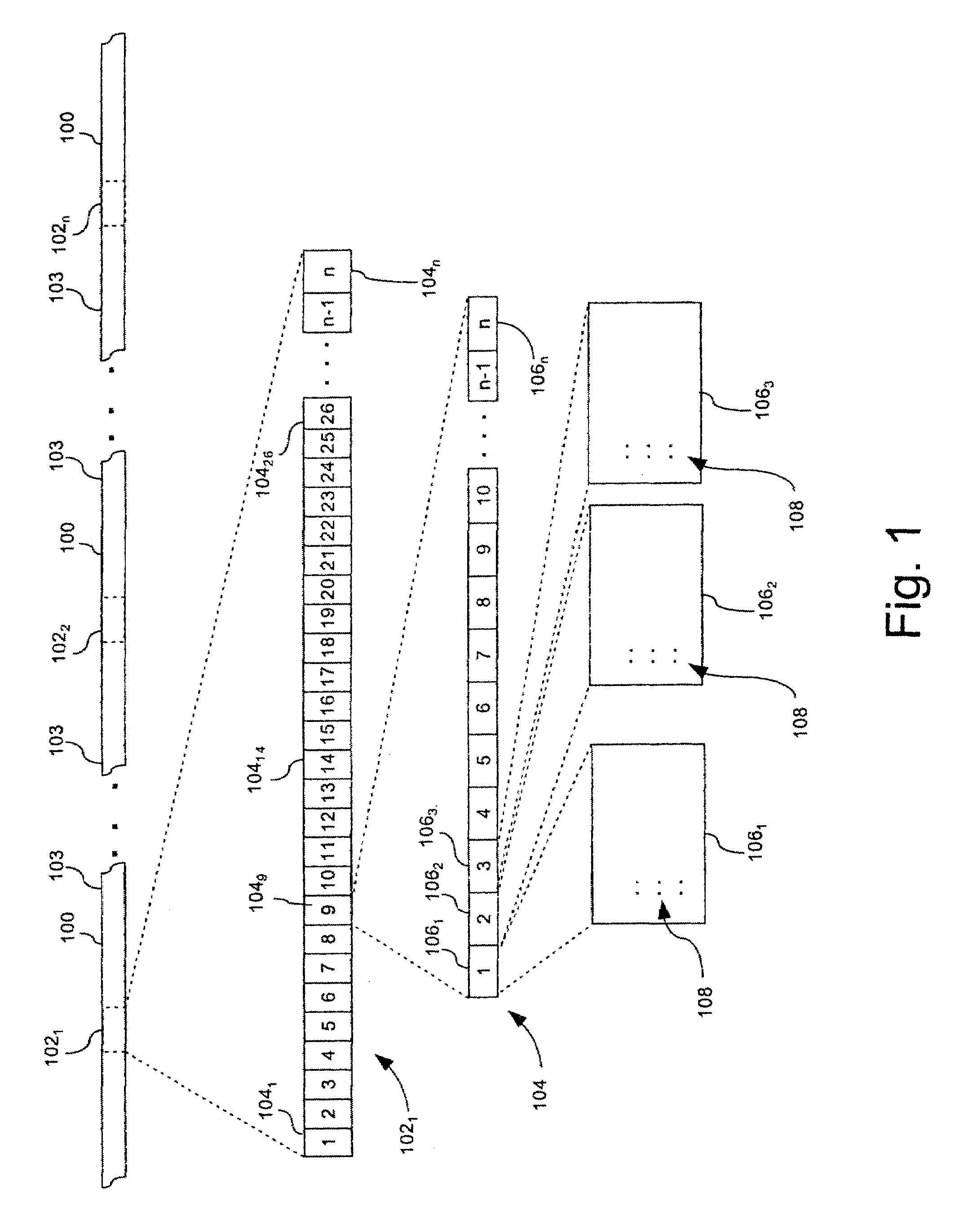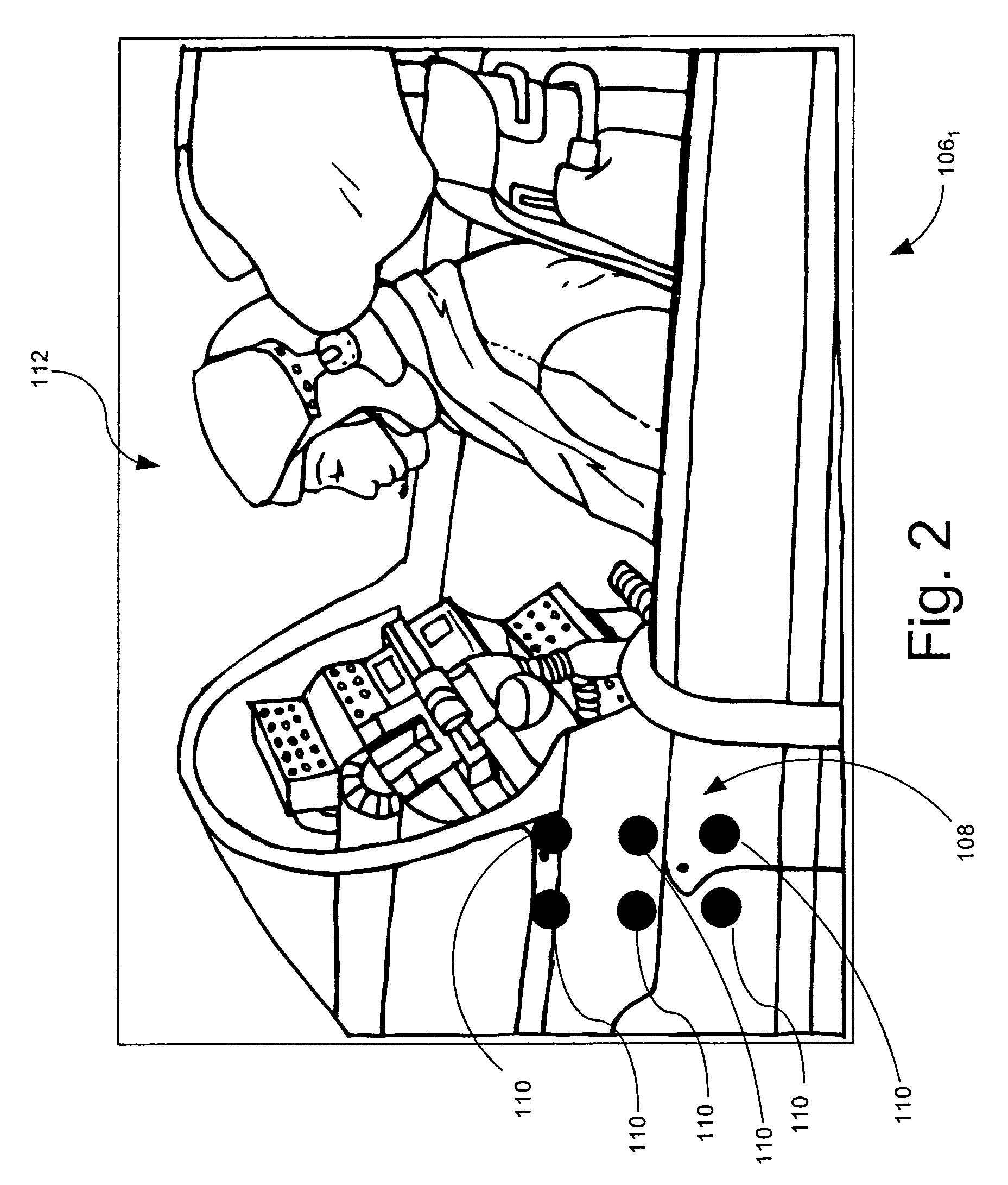Motion picture anti-piracy coding
a technology for motion pictures and coding, applied in the field of protecting films from illegal copying, can solve the problems of illicit copying, loss of certain control over the product, flickering images, etc., and achieve the effects of enhancing contrast, enhancing visibility of marking patterns, and easy detection
- Summary
- Abstract
- Description
- Claims
- Application Information
AI Technical Summary
Benefits of technology
Problems solved by technology
Method used
Image
Examples
Embodiment Construction
[0031]Motion pictures are commonly distributed to theaters around the world for exhibition. Accordingly, in order to distribute the motion picture to many locations simultaneously, multiple production copies of the motion picture are typically produced on a suitable media. Film is presently the most common media on which motion pictures are distributed to theatres. For example, a feature length film typically consists of anywhere from five to eight reels of film. However, those skilled in the art will recognize that the invention described herein for preventing piracy of motion pictures is not limited in its application to film media, but can instead be used with any media on which a motion picture can be recorded. Such media can include any of a wide variety of existing technologies including DVD, CD ROM, and magnetic disc as well as any other optical, electro-optical, magneto-optical storage formats as are now known or which may become known in the future.
[0032]FIG. 1 is a represe...
PUM
| Property | Measurement | Unit |
|---|---|---|
| shape | aaaaa | aaaaa |
| color | aaaaa | aaaaa |
| density | aaaaa | aaaaa |
Abstract
Description
Claims
Application Information
 Login to View More
Login to View More - R&D
- Intellectual Property
- Life Sciences
- Materials
- Tech Scout
- Unparalleled Data Quality
- Higher Quality Content
- 60% Fewer Hallucinations
Browse by: Latest US Patents, China's latest patents, Technical Efficacy Thesaurus, Application Domain, Technology Topic, Popular Technical Reports.
© 2025 PatSnap. All rights reserved.Legal|Privacy policy|Modern Slavery Act Transparency Statement|Sitemap|About US| Contact US: help@patsnap.com



